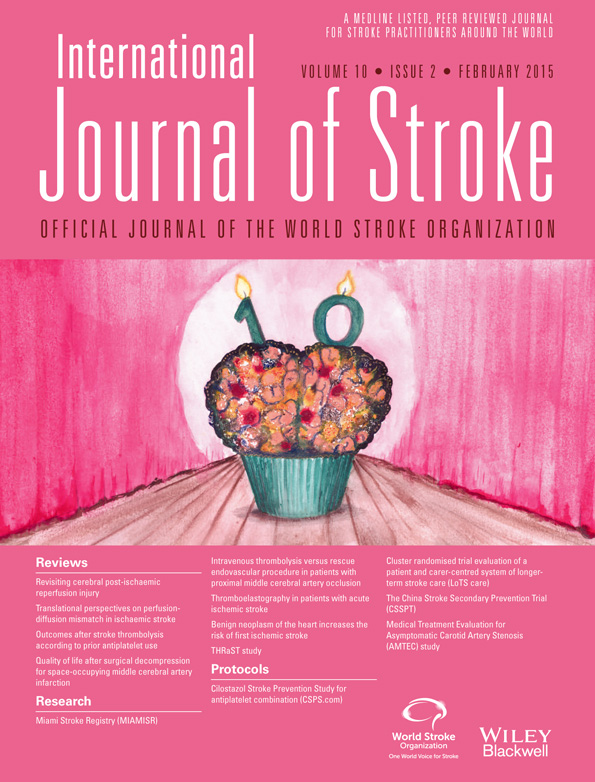Quality of life after surgical decompression for space-occupying middle cerebral artery infarction: Systematic review
Abstract
Background and Purpose
In patients with space-occupying middle cerebral artery infarction, surgical decompression strongly reduces risk of death and increases the chance of a favorable outcome. This comes at the expense of an increase in the risk of survival with (moderately) severe disability. We assessed quality of life, depression, and caregiver burden in these patients.
Summary of Review
We systematically reviewed the literature by searching MEDLINE, EMBASE, and PsycINFO up to March 2014. We included randomized controlled trials, cohort studies, case–control studies, and case series with quality of life, depression, or caregiver burden as primary or secondary outcome. Seventeen articles reporting on 459 patients were included. At final follow-up at 7 to 51 months, 1344 patients (30%) had died, and 34 (11%) were lost to follow up. Data on 291 patients were available, of whom 81 of 213 survivors (39%) achieved good functional outcome at final follow-up (modified Rankin Scale ≤3). Mean quality of life was 46% to 67% of the best possible score when based on questionnaires or visual analogue scales. At final follow-up, 143 of 189 patients (76%) would in retrospect again choose for surgical decompression. Severe depressive symptoms were present in 14 of 113 patients (16%). Three studies investigated caregiver burden and reported substantial burden. Patients more than 60 years old had a lower quality of life in comparison with younger patients.
Conclusions
Most patients treated with surgical decompression for space-occupying infarction have a reasonable quality of life at long-term follow-up and are satisfied with the treatment received. Severe depressive symptoms are uncommon.




